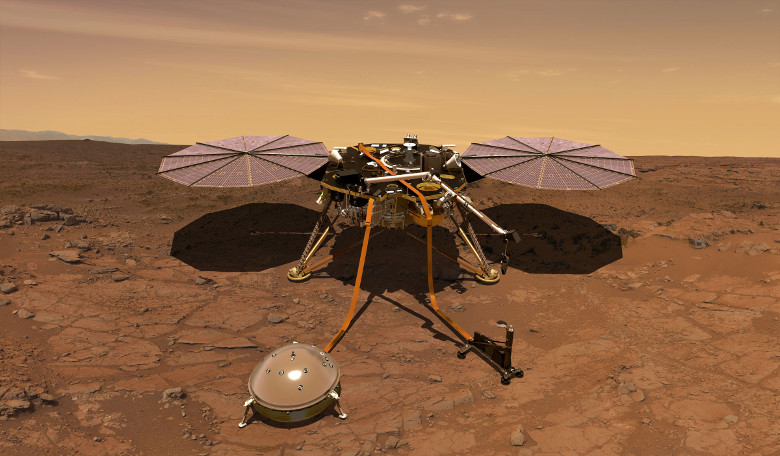From planet-hunting to the Red Planet, it has been a busy few weeks for NASA as the countdown begins for the space agency's next mission; the launch of its martian rover known as InSight.
Just a few weeks ago, NASA sent their Transiting Exoplanet Survey Satellite (TESS) into orbit with the aid of a Falcon 9; now it is the turn of the InSight lander. This time however, the lander will blast off tomorrow (5 May) from the west coast of America aboard a United Launch Alliance (ULA) Atlas V rocket.
The official start of the countdown begins today at 10:14 a.m PDT (13.05 p.m EDT/17.05 p.m GMT) but starting tomorrow from 4:05 a.m PDT (7:05 a.m EDT/11.05 a.m GMT), a two hour launch window will open every day – should the first attempt at take-off not go quite according to plan – that is available until 8 June. During each date's window, launch opportunities are set five minutes apart, but whatever day the lander makes its escapes from Earth, it is scheduled to touch down on the Red Planet on 26 Nov, 2018, around noon PST (3 p.m EST/7 p.m GMT).
Once airborne, InSight's Atlas will reach orbit about 13 minutes after launch, when the rocket is about (1,200 miles) (1,900 kilometres) northwest of Isabella Island, Ecuador. Hoping to blaze another trail along the way will be MarCO. MarCO is two CubeSats that will travel to the Red Planet along with InSight to test key technologies en route to Mars. Their mission, while important in their own right, will not impact upon the science objectives set aside for InSight.
InSight, which stands for Interior Exploration using Seismic Investigations, Geodesy and Heat Transport, will be NASA’s first mission to peer deep within the interior of Mars with a suite of instruments designed to give the planet a thorough check-up from the inside out.
Up until now, previous missions to the Red Planet have concentrated on its exterior by studying martian volcanoes, canyons, rocks and soil. But to learn how the planet formed then you need to dig, or rather listen much deeper below the surface. One particular phenomena that scientists are eager to learn more about are Marsquakes.
Like Earthquakes on Earth, Mars is suspected of experiencing its own quakes which emanate from either tectonic activity or from meteorites striking the planet's surface. These quakes reverberate through the planet in the form of seismic waves and by listening in with the landers seismometer (SEIS), the properties of Mars’s crust, mantle and core can be measured.
Scientists expect to detect anywhere between a dozen and a hundred of these tremors over the course of two years; some of which could reach up to 6.0 on the Richter scale.
Understanding how much heat is flowing out of the deep interior of the planet, is the job of the heat probe HP3, while RISE will help scientists work out how the deep interior structure affects the planet's motion around the Sun.
Like Earth, Mars wobbles a little as it rotates around its axis; by precisely tracking the location of the lander with two radio antennas, RISE will be able to measure the slightest changes in the landers location to reveal how Mars is moving in its orbit. This in turn should expose the depth at which Mars’s core becomes solid, and what other minerals, besides iron, may be present.
These insights (ahem) into how the Red Planet works will not just benefit studies exclusive to Mars, but will help uncover the evolutionary history that shaped all of the rocky planets in the inner solar system.
To watch live televised coverage of the launch, go to: https://www.nasa.gov/live











